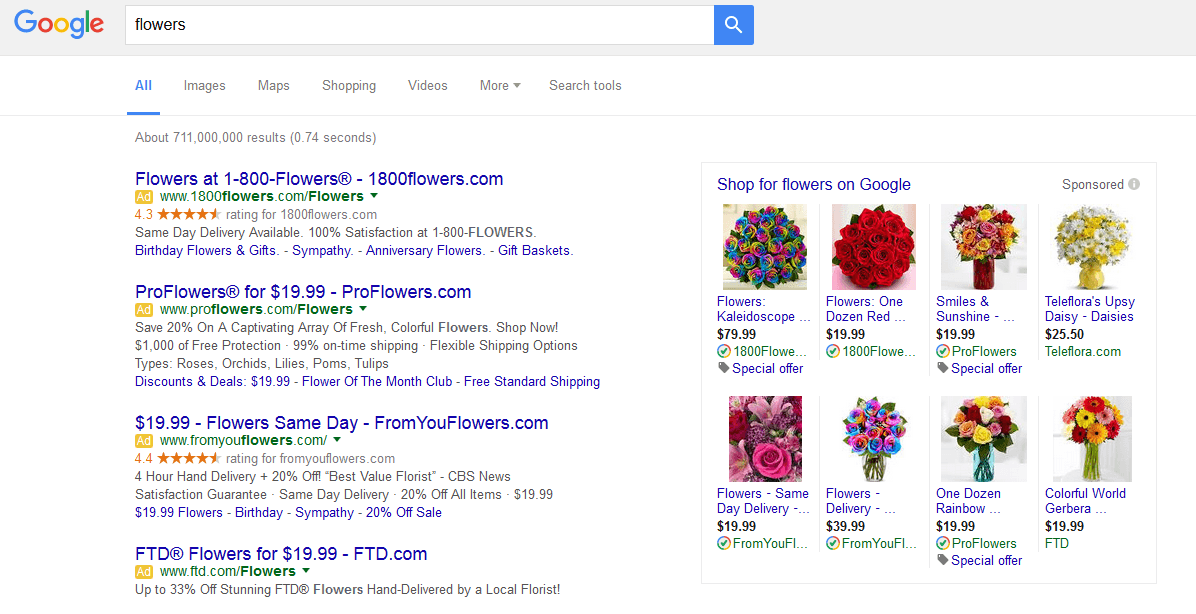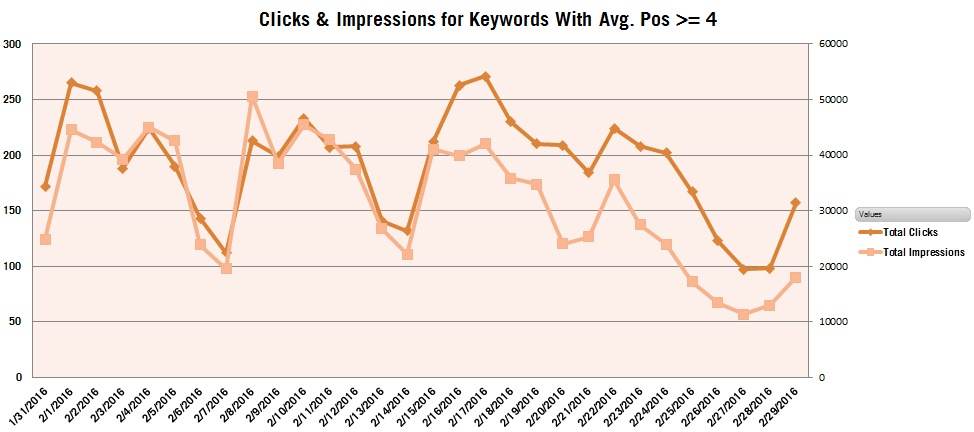On February 19, 2016 Google confirmed they removed text ads from the right side of search result pages and will now place up to 4 ads on top of organic search results for some queries that trigger advertisements.
How does this change affect keywords with low average positions?
While 4 ads on top of search results sounds like a lot, this change actually means fewer ads overall since sidebar ads no longer display. To understand the impact of this layout change on our clients’ paid media performance, we pulled top-line metrics at the campaign and keyword levels from a subset of AdWords accounts we manage.
Of the accounts analyzed, impressions and clicks for keywords we bid on with average positions greater than 3 dropped at the end of February. The trend is more prolific when looking at our small business accounts, which makes sense as our top accounts were already using top of page bids.
CTR for keywords in position 4 skyrocketed the week following the ad layout change. While the data is sparse at the individual account level, the macro trend for position 4 CTR looks to be ~60%+.
Why did Google make this change?
While we can only speculate on the reasons Google made this change, we believe this isn’t just about making more revenue. This update brings desktop SERPs in line with mobile, and keeps the layout of searches consistent between devices.
An interesting insight we discovered while analyzing our clients’ campaign performance is position 3 and 4 top of page ads actually have better CTRs than side ads overall (that’s a weighted average of the entire sidebar, not just top right rail vs those 2 slots). Right rail ads don’t have sitelinks, callouts, reviews, or other rich markup – so they look very different from the top/bottom ads. By only using wide ad formats, all the ads now have a similar feel.
What does this mean for CPCs?
We have not seen any fluctuations in CPC, however, we expect this to change in the near future as there is less inventory to bid on. Advertisers who previously targeted low cost, low position keywords will need to increase their CPCs to rank on page one which may lead to higher bid prices for keywords that show minimal advertising.
To learn more about how this change may affect your AdWords campaigns, or to schedule a consultation with one of our team members, you can contact us here or call us at (212) 661-8969. We look forward to putting our experience to work for your business.








